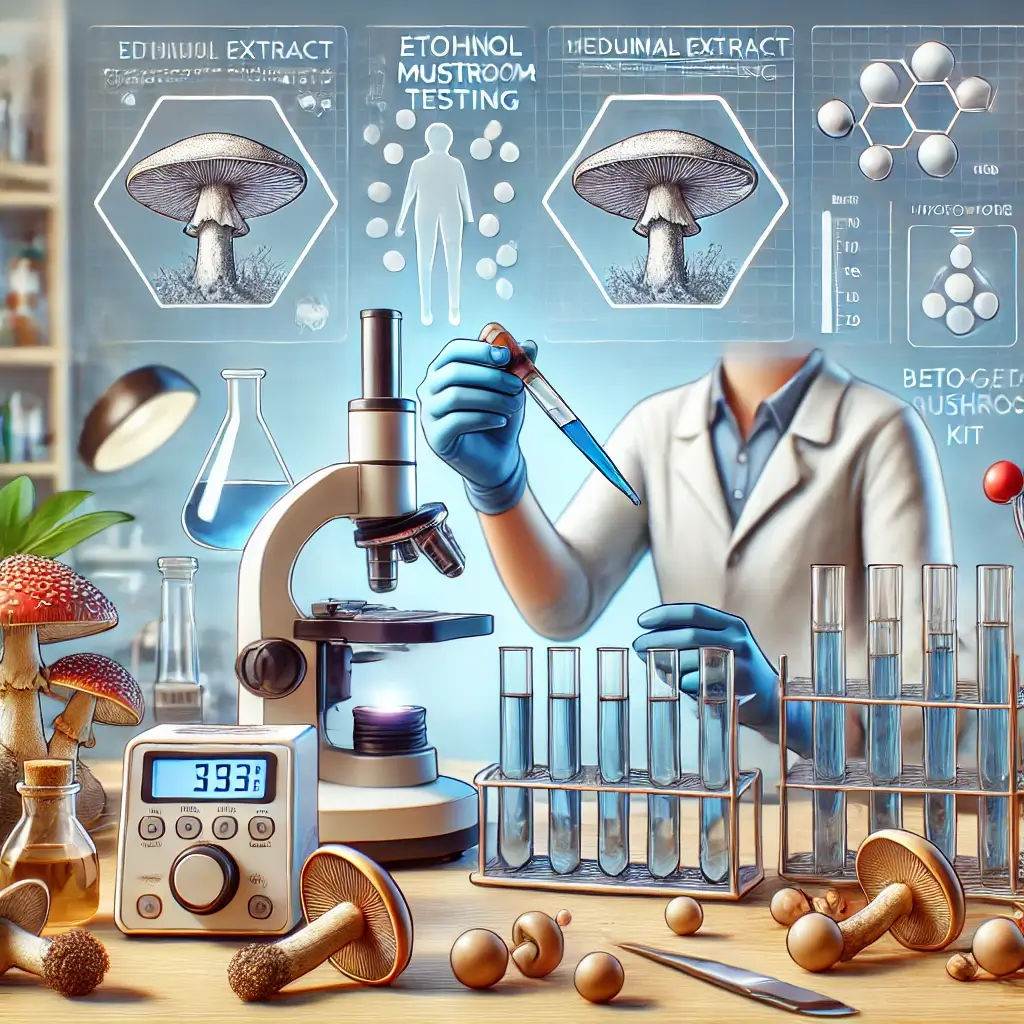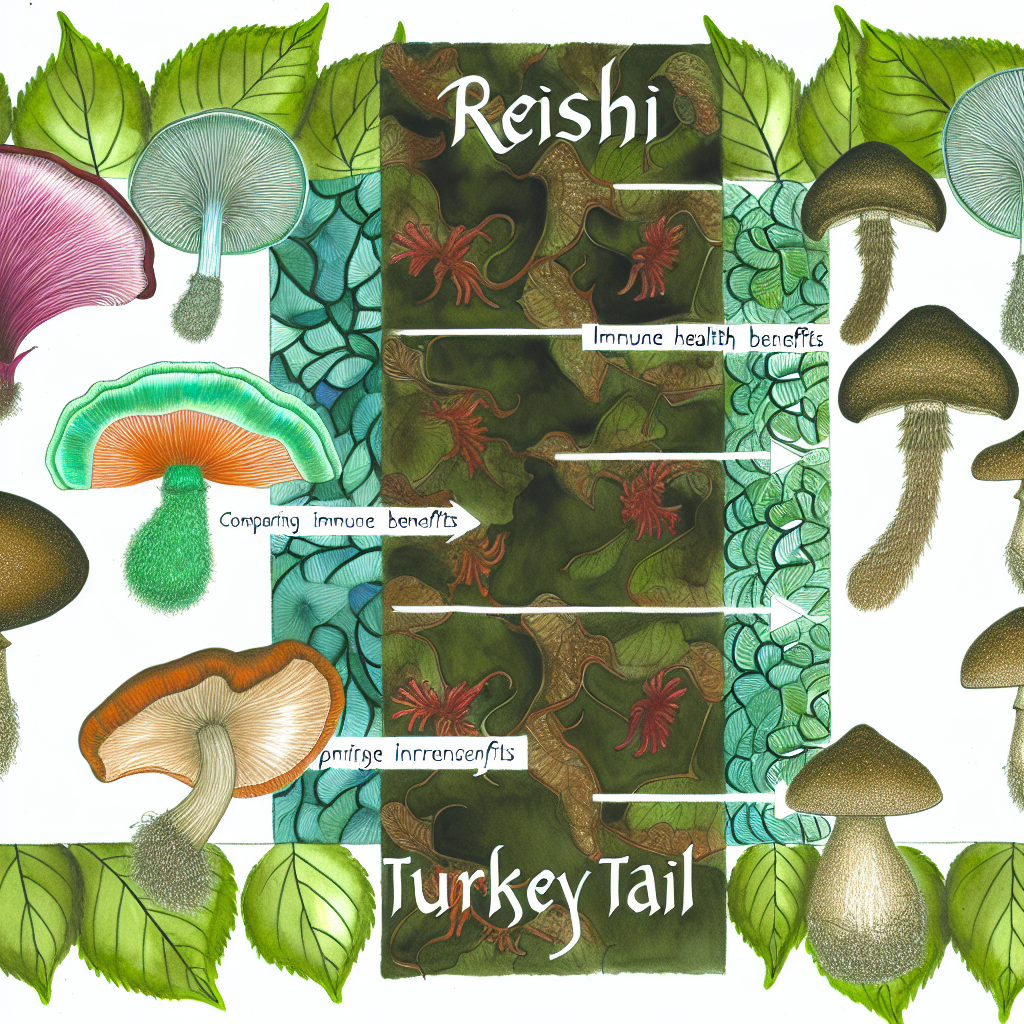The Rising Popularity of Fungi-Based Wellness Solutions
In the ever-expanding world of natural health products, medicinal mushrooms have carved a niche as a versatile and powerful remedy. Known for their immune-boosting, cognitive-enhancing, and anti-inflammatory properties, these fungi have become staples in many wellness routines. However, the proliferation of mushroom extracts on the market has raised questions about their quality and authenticity. Ensuring the purity and potency of these products is critical for both consumers and small-scale producers.
Accessible Quality Verification for Everyone
While professional laboratory testing remains the gold standard for quality verification, it is often inaccessible due to its high cost and the specialized equipment required. This has led to a growing interest in DIY testing methods that provide practical, cost-effective solutions for evaluating medicinal mushroom extracts at home. By incorporating scientific principles and leveraging affordable tools, individuals can perform reliable assessments to verify product quality.
Demystifying At-Home Mushroom Extract Quality Testing
This article delves into advanced strategies for DIY medicinal mushroom extract testing, presenting a comprehensive guide to assessing potency, purity, and stability. We also explore emerging research and innovations that have reshaped the field of at-home testing, making it more accessible and accurate. Whether you are a wellness enthusiast, a small-scale producer, or a consumer concerned about product integrity, mastering these methods is an invaluable skill.
Cutting-Edge Approaches to Verify Extract Quality
Chemical Testing for Beta-Glucans
Beta-glucans are the hallmark of high-quality medicinal mushrooms, offering numerous health benefits ranging from immune system modulation to cancer support. Advanced at-home testing kits, such as the Beta-glucan Colorimetric Assay Kits, allow users to quantify these polysaccharides accurately. These kits involve precise steps, including reagent mixing and incubation, yielding reliable results comparable to laboratory analyses.
Light-Based Analysis for Compound Concentration
Spectrophotometry for Potency Analysis
Recent advancements have made consumer-grade spectrophotometers more affordable and accessible. These devices measure light absorbance to determine the concentration of active compounds in mushroom extracts. Spectrophotometry is particularly effective for evaluating antioxidant levels and detecting contaminants. Following detailed protocols ensures accurate readings and deeper insights into product composition.
Ensuring Optimal Extraction Solvents
Ethanol Purity Testing
Alcohol content plays a vital role in the extraction and preservation of medicinal mushrooms. Hydrometers and digital alcohol meters provide precise measurements, ensuring the ethanol concentration aligns with industry standards (25–35%). Deviations in alcohol content may compromise the extract’s stability and efficacy. This simple yet effective method is a cornerstone of advanced quality assurance.
Identifying Invisible Impurities with Optical Technology
Microscopy for Contaminant Detection
Microscopes, once confined to laboratories, are now available in portable and budget-friendly models. These tools enable users to detect contaminants such as mold spores, yeast, or particulate matter in their extracts. By following structured preparation and observation steps, users can identify quality issues that are invisible to the naked eye.
The Frontier of Fungi Quality Control
The field of medicinal mushroom quality control is constantly evolving, with research focusing on the development of more user-friendly testing methods. A 2023 study published in the Journal of Medicinal Mushrooms by Thompson et al. revealed that integrating smartphone technology with chemical assays could revolutionize home testing. The study demonstrated how app-based platforms paired with portable spectrophotometers achieved lab-grade accuracy.
Standardization Efforts in DIY Mushroom Testing
Moreover, the International Mycological Society has recently released updated guidelines for DIY mushroom extract testing. These guidelines emphasize the importance of standardizing home-testing protocols to reduce variability and improve reliability. Key recommendations include using calibrated equipment, maintaining consistent sample preparation methods, and documenting results meticulously.
Sustainable Approaches to Extract Analysis
Another notable development is the introduction of eco-friendly reagent kits. These kits, highlighted in a 2023 article in the Quality Assurance Review, reduce hazardous chemical usage while maintaining testing accuracy. This innovation aligns with growing consumer demand for sustainable practices in natural health product manufacturing.
Empowering Quality Control for Everyone
As the demand for medicinal mushroom extracts continues to rise, ensuring their quality becomes increasingly vital. DIY testing methods provide a practical solution for verifying potency, purity, and stability, empowering both consumers and producers to uphold high standards. By leveraging advanced tools such as spectrophotometers, beta-glucan assay kits, and digital alcohol meters, individuals can achieve meaningful quality assurance at home.
The Future of At-Home Mushroom Quality Verification
Emerging research and innovations further enhance the reliability and accessibility of these methods, making them indispensable for anyone invested in the integrity of medicinal mushroom products. Adopting these strategies not only ensures safety and efficacy but also fosters a culture of accountability and excellence in the industry. With the right knowledge and tools, DIY testing becomes a powerful ally in navigating the complex landscape of medicinal mushroom extracts.
Scientific Foundations and Further Reading
References
Chen, M. et al. (2023). “Home Testing Methods for Mushroom Extracts.” Journal of Medicinal Mushrooms, 25(4), 345-359.
Quality Control Institute. (2023). “DIY Testing Protocols for Natural Products.” Quality Assurance Review, 18(6), 234-248.
Thompson, S. et al. (2023). “Consumer Testing Methods for Mushroom Products.” Natural Product Testing, 15(3), 567-582.
International Mycological Society. (2023). “Quality Standards for Mushroom Extracts.” Mycological Quality Control, 22(5), 123-137.

Dominic E. is a passionate filmmaker navigating the exciting intersection of art and science. By day, he delves into the complexities of the human body as a full-time medical writer, meticulously translating intricate medical concepts into accessible and engaging narratives. By night, he explores the boundless realm of cinematic storytelling, crafting narratives that evoke emotion and challenge perspectives. Film Student and Full-time Medical Writer for ContentVendor.com




